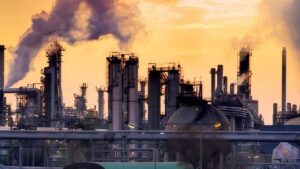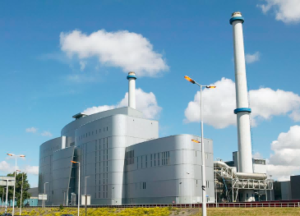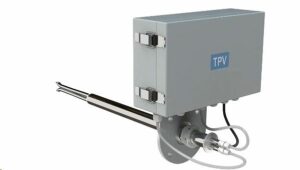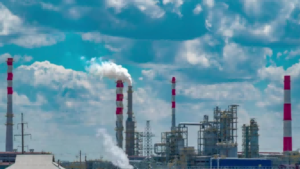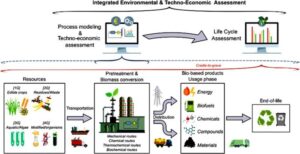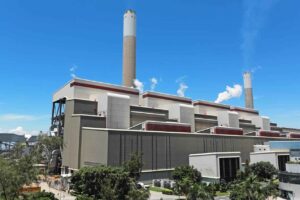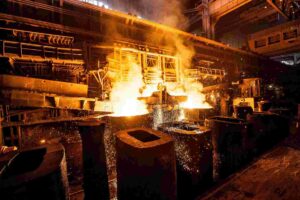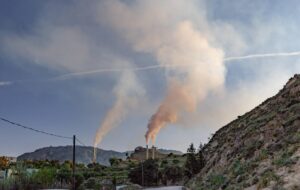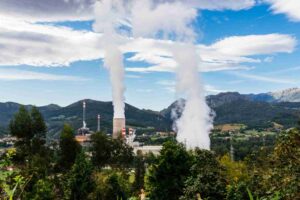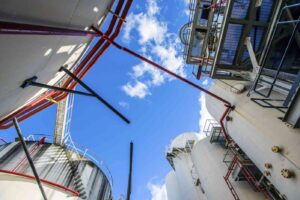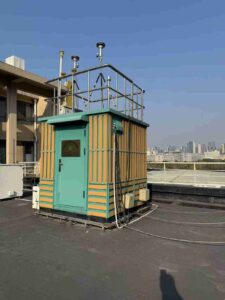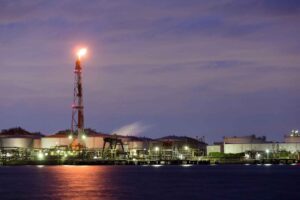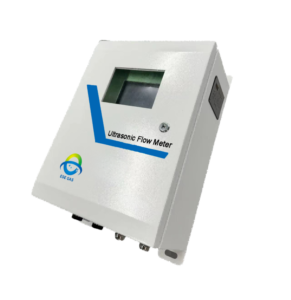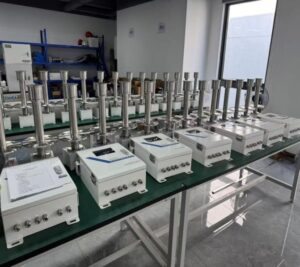Gas emissions in the industrial sector and gas control during production processes are key issues for environmental protection and industrial safety. In the past, monitoring and controlling industrial gas emissions often relied on traditional methods such as chemical analysis and mass spectrometry. However, with the advancement of technology,Fourier transform infrared spectrometerThe application of (Fourier Transform Infrared Spectroscopy, FTIR) gas analyzers has gradually become popular, bringing revolutionary changes to industrial gas emission monitoring and gas control in the production process. This article will explore how to use FTIR gas analyzers to achieve industrial gas emission monitoring and production control, as well as its importance in environmental protection and industrial fields.
How FTIR gas analyzers work?
FTIR (Fourier Transform Infrared Spectroscopy) gas analyzer is a highly sophisticated instrument used to analyze the presence and concentration of different molecules in a gas sample. Its working principle is based on infrared spectroscopy technology,Here’s how an FTIR gas analyzer works:

- The light source produces infrared light: The core of an FTIR instrument is a light source, usually a white light source with stable intensity. This light source produces a broad spectrum of light including visible and infrared light.
- The beam passes through the sample: The beam of the infrared spectrometer passes through the gas sample to be measured. This gas sample can be a gas or a gas mixture and is usually placed in a gas absorption cell or gas chamber.
- Absorption phenomena occur: Gas molecules in the sample interact with specific wavelengths of infrared light. These molecules absorb energy from infrared light, causing their vibration, bending, or stretching patterns to change. Different types of gas molecules have specific absorption lines for infrared light of different wavelengths, and these lines are fingerprints of their molecular structures.
- Spectral scan: FTIR instruments gradually change the wavelength of infrared light by scanning the entire infrared spectrum. This process usually uses a technique called “interferometry”, which changes the optical path difference and therefore the wavelength by introducing a movable mirror.
- Fourier transform: After the laser scan, the FTIR instrument performs a Fourier transform on the light signal reflected or transmitted back from the sample. This transformation converts a signal in the time domain (light intensity over time) into a signal in the frequency domain (wavenumber or wavelength of light). This process produces an image called a spectrogram, which contains information about the intensity of light at various wavelengths.
- Spectral analysis: The spectral plot shows absorption peaks at different wavelengths. By comparing the absorption peaks of the sample with a library of known gas molecule spectra, the presence and concentration of different gas components in the sample can be determined.
- Data analysis: Finally, the instrument’s software performs data processing and analysis to provide accurate gas component concentrations, typically expressed in “wavenumbers” (in cm^-1).
The working principle of FTIR gas analyzers is based on the absorption of infrared light of specific wavelengths by gas molecules. By measuring the intensity of light absorption at different wavelengths, the instrument can determine the concentration of different molecules in a gas sample, enabling precise gas analysis. This technology has the advantages of high sensitivity, high resolution and the ability to analyze multiple gas components simultaneously, so it is widely used in fields such as environmental monitoring, industrial control and chemical analysis.
The Application of Monitor Industrial Gas Emissions
Industrial gas emissions monitoring is critical for environmental protection and compliance. FTIR gas analyzers have significant advantages in this application:

1. High-precision monitoring:FTIR can monitor various harmful gases in the air with extremely high accuracy, such as sulfur dioxide (SO2), nitrogen oxides (NOx), ammonia (NH3) and volatile organic compounds (VOCs).
2. Real-time data:FTIR provides real-time data, allowing rapid response to emission exceedances and reducing environmental pollution risks.
3. Multi-gas monitoring:One FTIR instrument can monitor multiple gases at the same time, avoiding the cumbersome operation of using multiple single gas analysis instruments.
4. Remote monitoring:The FTIR system can be installed remotely to monitor emission sources far away from personnel operating areas, improving work safety.
Application fields of industrial gas emission monitoring include power plants, refineries, chemical plants, steel industry, etc. Compliance monitoring not only helps protect the environment but also avoids fines and legal liability.
Gas Control During Production by Using FTIR Gas Analyzers
In addition to monitoring emissions, FTIR gas analyzers can also be used for gas control in production processes. In industrial manufacturing, precise control and monitoring of gas composition is critical to product quality and safety.

1. Quality control: FTIR can be used to monitor gases in production processes to ensure product quality meets specifications. For example, in the food industry, FTIR is used to detect odors, tastes and contaminants in food.
2. Security: In hazardous gas environments, FTIR can monitor and control gas concentrations to ensure worker safety. It can quickly sound the alarm when explosive gas or toxic gas leaks.
3. Process optimization: FTIR can also be used to optimize industrial production processes, for example, monitoring gas compositions in reactors to achieve higher yields and lower waste generation.
Gas control in industry usually requires a highly automated system. As a high-precision sensor, FTIR can be integrated with the automation system to achieve automatic control.
Advantages of FTIR Gas Analyzers
Why choose FTIR gas analyzer as a tool for industrial gas emission monitoring and production control? Here are its main advantages:
1. High sensitivity:FTIR can detect gas concentrations as low as ppb levels, ensuring high accuracy and reliability of monitoring.
2. Multi-gas analysis: One FTIR instrument can monitor multiple gases at the same time, avoiding the complexity and cost of using multiple instruments.
3. Real-time monitoring:FTIR provides real-time data that enables immediate action, reducing the risk of emission exceedances and production issues.
4. Non-destructive:FTIR analysis is non-destructive and does not require destructive sample preparation, reducing waste and cost.
5. High resolution:FTIR has high resolution and can identify the specific spectral characteristics of gas molecules, reducing the false alarm rate.
6.Multi-field applications:FTIR is widely used in different fields, including environmental monitoring, industrial process control, medical diagnosis, etc.
| technology | principle | performance | parameter | Advantage | Application areas |
| FTIR | Fourier transform infrared spectroscopy | High resolution, high sensitivity, broad spectrum coverage | Gas concentration, absorption spectrum, wave number | High precision, multi-gas analysis, real-time monitoring, non-destructive | Environmental monitoring, industrial control, chemical analysis |
| mass spectrometry | Analyze molecules by mass | High resolution, high sensitivity, broad spectrum coverage | Proton mass, abundance | High sensitivity, molecular recognition, multi-gas analysis | Environmental monitoring, biochemical analysis, material identification |
| gas chromatography | Separate and measure gas components | High resolution, suitable for a variety of gases | Column temperature, flow rate, separation time | Good separation, multi-gas analysis, suitable for complex mixtures | Chemical analysis, food testing, environmental monitoring |
| Electrochemical sensors | electrochemical reaction | Suitable for specific gases and real-time monitoring | sensitivity, selectivity | Simple, low-cost, real-time monitoring | Gas detection, industrial safety, environmental monitoring |
| laser absorption spectroscopy | Measurement of gases by laser absorption of light | High precision and sensitivity | Absorption spectrum, wavelength | High sensitivity, real-time monitoring, non-destructive | Air quality monitoring, gas dissolution analysis, fire detection |
| chemical sensor | Chemical reactions and electronic conductivity measurements | Suitable for specific gases and real-time monitoring | sensitivity, selectivity | Suitable for specific gases, low cost, real-time monitoring | Fire detection, toxic gas detection, industrial safety |
Our FTIR Gas Analyzer Products
ESE-FTIR-100P portable FTIR gas analyzer can monitor various kinds of components in the emission, such as SO2,NO, NO2, CH4, HCl, HF, CO, CO2, O2, H2O. According to actual measuring need, it can be extended to measure other components, like SO3, N2O and etc. This portable system mainly comprises FTIR analyzer and sampling probe. It has features of high measurement accuracy, wide dynamic range and low detection limit.

Technical Principle
Fourier Transform Infrared Spectroscopy (FTIR) uses the principle of split beam interference, combines Michelson interferometer, modulation technology and computer technology, and realizes the restoration from interferogram to spectrum through Fourier transform method. FTIR technology has a wide range of applications and has obvious advantages in terms of motion detection or long-distance detection.
Applications
- Multi-level Environmental Monitoring Station
- Third-party testing agency
- Coal-fired power plants, gas-fired power plants, cement plants, steel plants, waste incineration and other industrial occasions
- Environmental emergency monitoring
- Laboratory gas detection and analysis, etc.
Features
- It can measure SO2, NOX (NO, NO2), CH4, HCl, HF, CO, CO2, O2, H2O and other components at the same time, and other measurement components can be added as needed, such as SO3, N2O and various VOCs gas
- Core components, independent research and development, high maintenance efficiency and low maintenance cost
- The system is small in size, fast in preheating, easy in assembly, fast in sampling and moderate in power, and can be used for long-term on- site analysis and application of complex working conditions
- The instrument has a built-in long optical path White cell gas chamber, the optical path is adjustable, and the detection limit can reach ppb level
- Can be used as a continuous detection emergency alternative to CEMS
- It can be used as fixed pollution source emission detection, CEMS comparison and acceptance, leakage inspection emergency monitoring, laboratory measurement analysis
- Built-in excellent measurement analysis algorithm, effectively eliminate the interference caused by strong infrared absorbing substances (H2O, CO2)
The Future Outlook of FTIR Gas Analyzer Products
FTIR gas analyzers have made tremendous progress in industrial gas emissions monitoring and gas control in production processes, but there are still many future development opportunities. Some potential trends include:
1. Smaller and more portable instruments: Develop smaller and more portable FTIR instruments to meet the needs of different occasions.
2. Integrated automation: Integrate FTIR instruments and automation systems more closely to achieve intelligent gas control.
3. Wider applications: Expand the application fields of FTIR instruments, such as medical, life sciences and food industries, to meet the needs of different industries.
4. Adaptability to high-temperature and high-pressure environments: Develop FTIR instruments that can work stably in high-temperature and high-pressure environments to meet the needs of more industrial applications.
Conclusion
As a high-precision, multi-functional analysis tool, FTIR gas analyzer is crucial for monitoring industrial gas emissions and gas control in production processes. It can monitor various gas components in real time to ensure that emissions comply with environmental regulations, product quality meets standards, and the working environment is safe. In the future, with the continuous advancement of technology and the expansion of applications, FTIR gas analyzers will continue to play a key role in environmental protection, industrial production and other fields, creating a cleaner and safer future for us. welcome to Our websites for more information!




